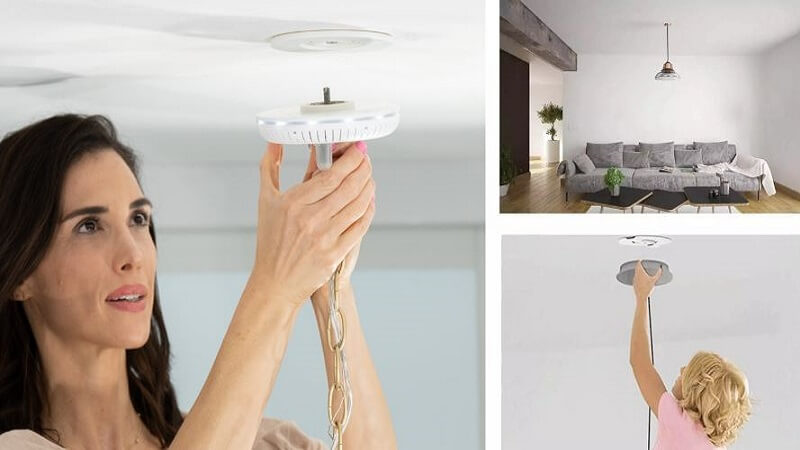Dark spots, high electricity bills, and fixing old lights are common problems in parking lots today. Smart lighting solutions transform these spaces by offering automated brightness control, remote monitoring, and significant energy savings while enhancing security through motion detection and real-time alerts.
Implementing these systems requires evaluating factors like facility size, traffic patterns, and existing infrastructure. The right smart lighting setup depends on your needs, from weatherproof LED fixtures to sophisticated control systems with motion sensors.
However, many businesses and property managers often struggle with secure lighting installation procedures and efficient maintenance. Don’t worry, this article provides you with practical steps and insights into safely installing smart lighting in parking spaces, highlighting key considerations and best practices for achieving a well-lit and secure parking environment.
Importance of Smart Lighting for Parking Lots
Smart lighting is ideal for parking lots and garages because it offers numerous benefits:
- Energy efficiency: Smart lights can detect movement, reducing energy consumption by dimming or switching off when no activity is detected.
- Enhanced safety: Better lighting improves visibility, reduces blind spots, and can limit criminal activity.
- Reduced maintenance costs: Many smart lighting systems are designed for long-term durability and require less frequent maintenance.
Step-by-Step Guide to Safely Installing Smart Lighting
Following the parking lot lighting safety guidelines ensures not only a safe and secure environment but also an efficient and cost-effective setup. Let’s discuss the structured approach to installing smart lighting in parking areas.
1. Conduct a Thorough Assessment of the Area
Before installation, it’s crucial to understand the unique requirements of your parking lot or garage. Assess the following:
- Lighting needs: Determine high-traffic areas, entrances, and exits, and prioritize these spots for lighting.
- Current infrastructure: Check if any existing wiring, poles, or fixtures are reusable or need upgrades.
- Environmental factors: Consider nearby trees, weather conditions, or reflective surfaces that might impact lighting effectiveness.
Conducting an initial assessment will provide a clear picture of your specific requirements, enabling you to select the best lighting solutions for your setup.
2. Choose the Right Smart Lighting System
Selecting a smart lighting system that meets your needs is crucial. Factors to consider include:
- Light intensity: Ensure the light is bright enough to cover large areas without causing glare.
- Sensor capabilities: Look for systems with motion detection and daylight sensors for energy-saving purposes.
- Weather resistance: Choose durable fixtures designed for outdoor use, as they are less likely to be damaged by rain, heat, or cold.
- Connectivity: Many smart systems can connect to a centralized control system, allowing for remote management and scheduling.
Smart lighting options vary, so choose a system compatible with the unique needs of your location.
3. Ensure Compliance with Safety Standards and Guidelines
Always follow relevant safety codes and standards to protect both installers and end-users. It also ensures that your setup meets industry safety standards, reducing liability and enhancing safety. These guidelines often outline specific requirements, such as:
- Minimum brightness levels for parking areas to ensure visibility.
- Distance between fixtures to prevent dark spots.
- Proper wiring and grounding to avoid electrical hazards.
4. Install Securely to Avoid Potential Hazards
Securely installing lighting fixtures is essential to prevent accidents or system failures. Here are some best practices:
- Proper mounting: Ensure all fixtures are mounted at the correct height, away from moving vehicles or equipment.
- Solid foundation: Secure poles and mounts firmly to avoid the risk of toppling due to wind or impact.
- Weatherproofing: Use weather-resistant materials and casings to protect the wiring and fixtures from external elements.
- Smart wiring: Organize wiring to avoid tangling or exposure, which can lead to short circuits.
Following these steps will ensure the installation is secure, reliable, and capable of withstanding various external factors.
5. Test and Correct the System
Testing is a crucial step after installation. Conduct tests at different times of day to ensure the lights activate as needed and that brightness levels are appropriate. It may involve:
- Adjusting sensor sensitivity to prevent unwanted activation or dimming.
- Fine-tuning light angles to cover blind spots or areas prone to shadows.
- Setting timers for lights to automatically turn on or off at specific times.
Thorough testing ensures the system performs effectively under real-world conditions and meets safety expectations.
6. Regular Maintenance for Long-Term Safety
Maintenance is necessary to keep the system in good working order and to prevent potential safety hazards. Develop a maintenance schedule to:
- Inspect lighting fixtures regularly for wear and tear.
- Replace faulty bulbs or sensors immediately to avoid reduced visibility.
- Check wiring connections for corrosion or exposure, especially after extreme weather.
With a regular maintenance routine, you’ll extend the life of your lighting system and keep your parking lot safe and well-lit.
Conclusion
Smart lighting offers an efficient and secure way to improve safety in parking lots and garages, but the installation process must be carefully managed to ensure success. By following lighting safety guidelines and employing secure installation practices, you can create a parking space that is both functional and safe. Regular assessments and maintenance will also ensure that your lighting system continues optimally, providing lasting benefits for all users.
By implementing these steps, you’ll achieve a reliable, energy-efficient, and secure lighting system for your parking lot or garage. Whether you’re upgrading an existing system or starting from scratch, these tips will help guide you toward a safe and successful installation.
